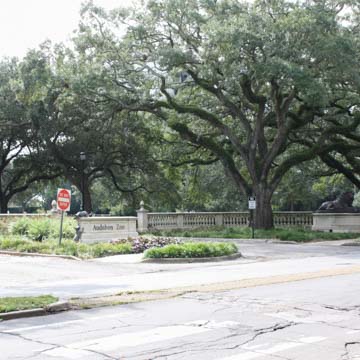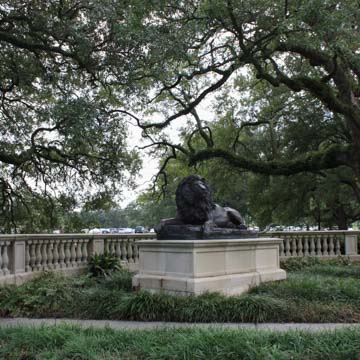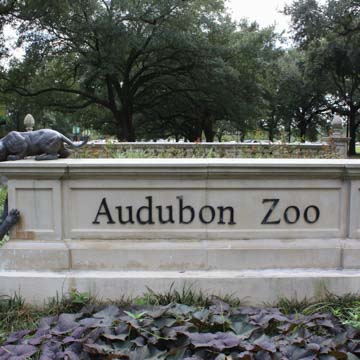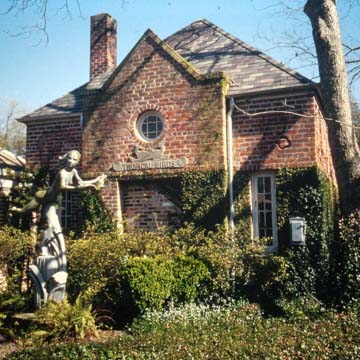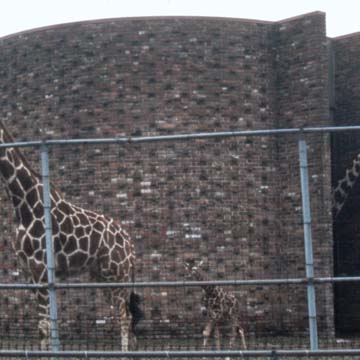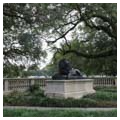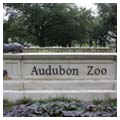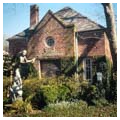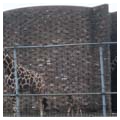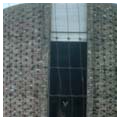John Charles Olmsted’s emphasis on using indigenous plants in his design for Audubon Park (OR179) heightened awareness of the beauty and unique qualities of southern Louisiana’s plants and animals. Consequently, an exhibit on swamps opened here in 1913 and a flight cage for birds in 1916. These displays were followed in 1924 by Favrot and Livaudais’s Odenheimer Aquarium, a circular brick structure linked to rectangular brick wings by Tuscan-columned pergolas, and a sea lion pool partially surrounded by a classical colonnade, designed by Samuel Stone Jr. The zoo officially opened in 1938, following the construction of several WPA-funded animal houses designed by Moise Goldstein beginning in 1934. These included a brick elephant house (1934) in the style of a French farmhouse, and a tropical-bird house (1936) decorated in 1939 with a low-relief sculpture of Noah’s Ark by artists Hans Mangelsdorf and Alice Fowler. Monkey Hill, New Orleans’s only hill (twenty-eight feet high), is the by-product of a pile of mud left from a WPA lagoon-building project. After grass grew on the hill, it became a favorite play spot for children. In 1958, Curtis and Davis built a circular brick structure for giraffes, which now houses two camels. The zoo expanded from thirteen to fifty acres in 1978 (Cashio Cochran, landscape architects), employing what was, at the time, the innovative concept of displaying animals in settings that replicated their native habitats, and in 1980 the last cage was removed. Subsequently, the Louisiana Swamp Exhibit was added (Cashio Cochran Torre/Design Consortium), which won honors from the American Society of Landscape Architects in 1983. The zoo continues to update its facilities with periodic refurbishments but is prohibited from expanding its current boundaries.
You are here
Audubon Zoo
If SAH Archipedia has been useful to you, please consider supporting it.
SAH Archipedia tells the story of the United States through its buildings, landscapes, and cities. This freely available resource empowers the public with authoritative knowledge that deepens their understanding and appreciation of the built environment. But the Society of Architectural Historians, which created SAH Archipedia with University of Virginia Press, needs your support to maintain the high-caliber research, writing, photography, cartography, editing, design, and programming that make SAH Archipedia a trusted online resource available to all who value the history of place, heritage tourism, and learning.


